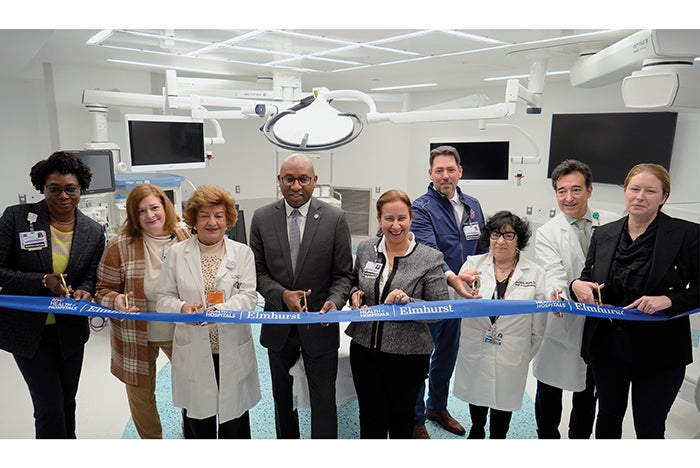Hospital rehabs 40-year-old OR suites

Borough President Donavan Richards (fourth from left) joins hospital staff for the opening of the ORs.
Image courtesy of NYC Health + Hospitals
As one of the oldest hospitals in its community, NYC Health + Hospitals/Elmhurst in Queens, N.Y., has helped its community weather every major public health event since the 1800s, including the 1918 flu and COVID-19 pandemics, while also providing daily critical care as a Level 1 trauma center.
Queens Borough President Donovan Richards has allocated several grants to ensure Elmhurst remains a stalwart of its community. One of those grants funded the $2.5 million conversion of two cytology rooms and attached anteroom into two full-sized operating rooms (ORs).
“The project was born from the need to replace the antiquated infrastructure and equipment that were in ORs 11 and 12,” says Erin Egan, senior regional director of capital projects at NYC Health + Hospitals’ office of facilities development. “They were around 40 years old and, while functioning, beyond their useful life.”
The full, gut renovation included removing the existing anteroom and allocating that space to the two new robotic-equipped ORs, allowing the individual room size to increase from around 400 square feet to 700 square feet. Improvements to the second-floor suites include improved mechanical, electrical and plumbing infrastructure; and structural changes to accommodate a da Vinci surgical system and ceiling-hung anesthesia, lights and equipment booms that free up floor space.
Upgrades to the heating, ventilating and air conditioning system include new ductwork for constant air volume distribution, HEPA filters and humidifiers located in the mechanical room on the floor above for easy maintenance access.
The new air system will supply 25 air changes per hour and maintain positive pressure inside the ORs. A new local control panel to monitor and control the OR temperature, humidity and pressure differential will connect to the hospital’s existing building automation system. New medical gas connections and isolated power for the ORs is also provided.
Egan says building in a sterile corridor required significant coordination between the surgical staff and construction team. The OR staff communicated its scheduled surgeries to the construction team but would also notify crews when they needed to vacate the space for emergency surgeries.




